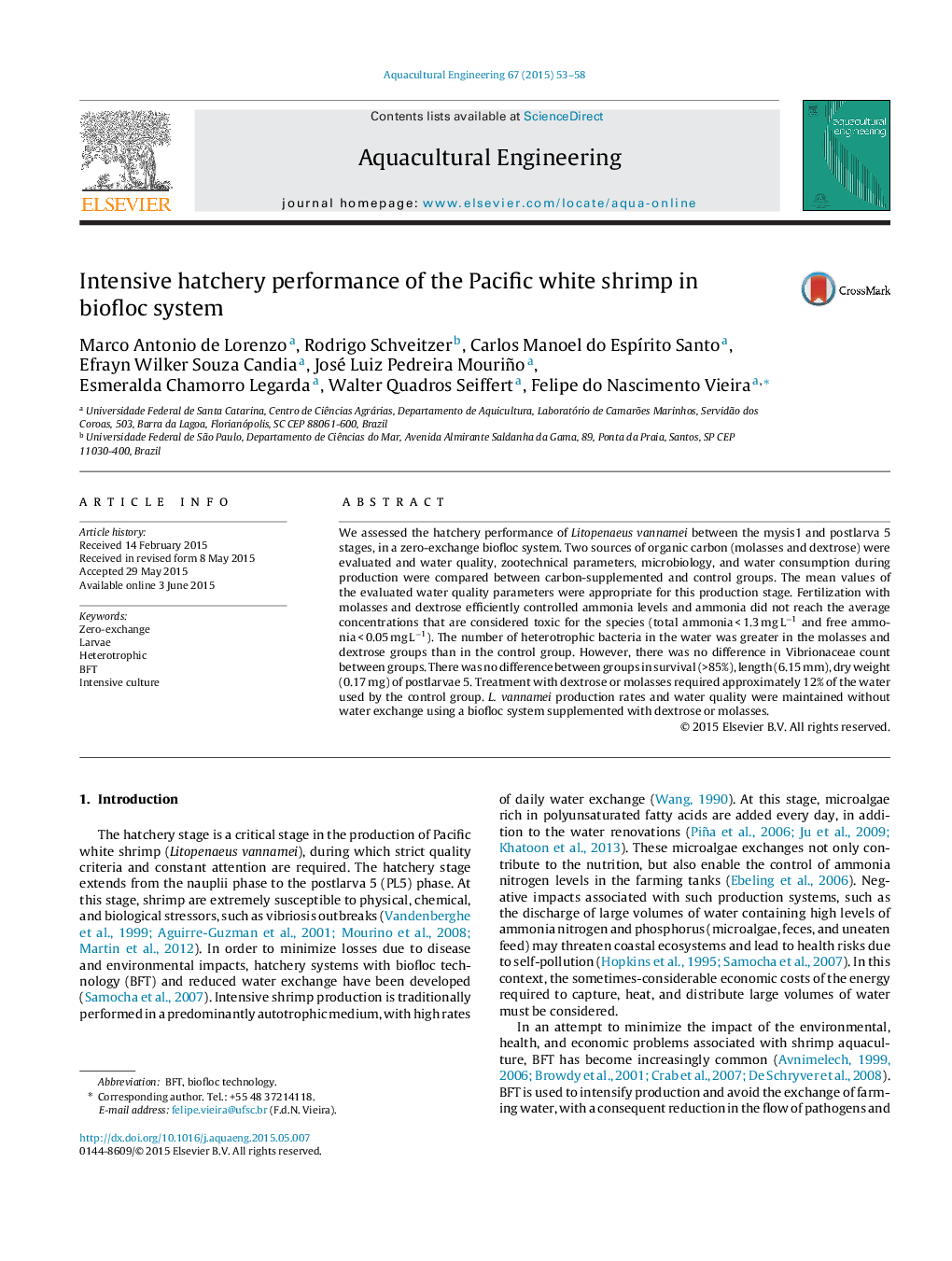| Article ID | Journal | Published Year | Pages | File Type |
|---|---|---|---|---|
| 4527170 | Aquacultural Engineering | 2015 | 6 Pages |
•Shrimp hatchery in zero-exchange biofloc system.•Dextrose and molasses can be used as carbon source in biofloc shrimp hatchery.•Hatchery performance in biofloc system is equal to conventional system.•Biofloc system requires only 12% of the water used by conventional system.
We assessed the hatchery performance of Litopenaeus vannamei between the mysis1 and postlarva 5 stages, in a zero-exchange biofloc system. Two sources of organic carbon (molasses and dextrose) were evaluated and water quality, zootechnical parameters, microbiology, and water consumption during production were compared between carbon-supplemented and control groups. The mean values of the evaluated water quality parameters were appropriate for this production stage. Fertilization with molasses and dextrose efficiently controlled ammonia levels and ammonia did not reach the average concentrations that are considered toxic for the species (total ammonia < 1.3 mg L−1 and free ammonia < 0.05 mg L−1). The number of heterotrophic bacteria in the water was greater in the molasses and dextrose groups than in the control group. However, there was no difference in Vibrionaceae count between groups. There was no difference between groups in survival (>85%), length (6.15 mm), dry weight (0.17 mg) of postlarvae 5. Treatment with dextrose or molasses required approximately 12% of the water used by the control group. L. vannamei production rates and water quality were maintained without water exchange using a biofloc system supplemented with dextrose or molasses.
